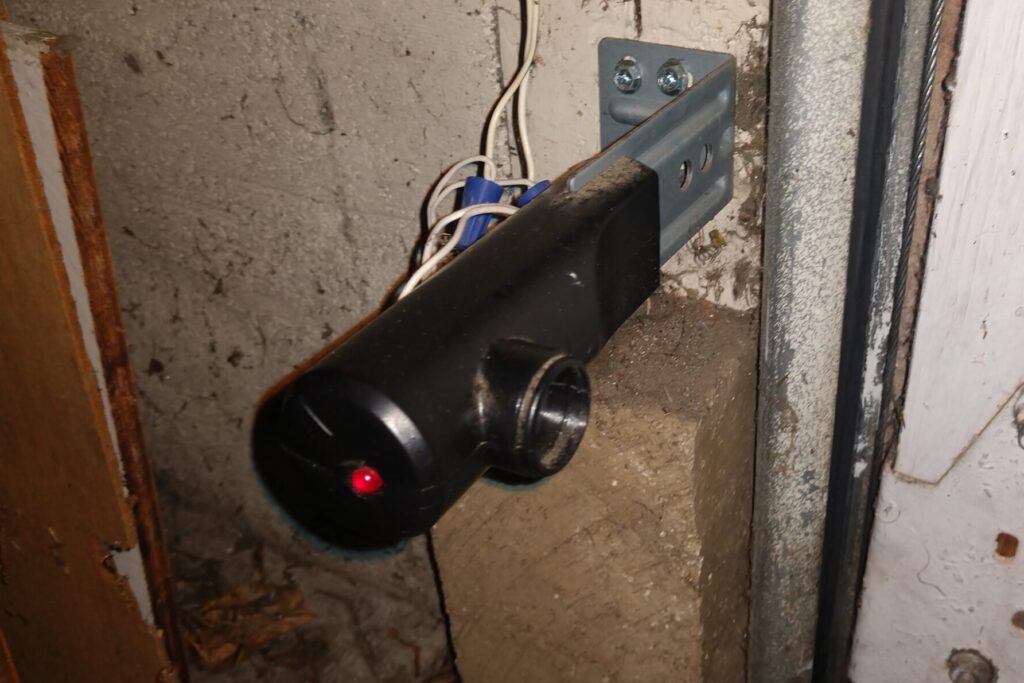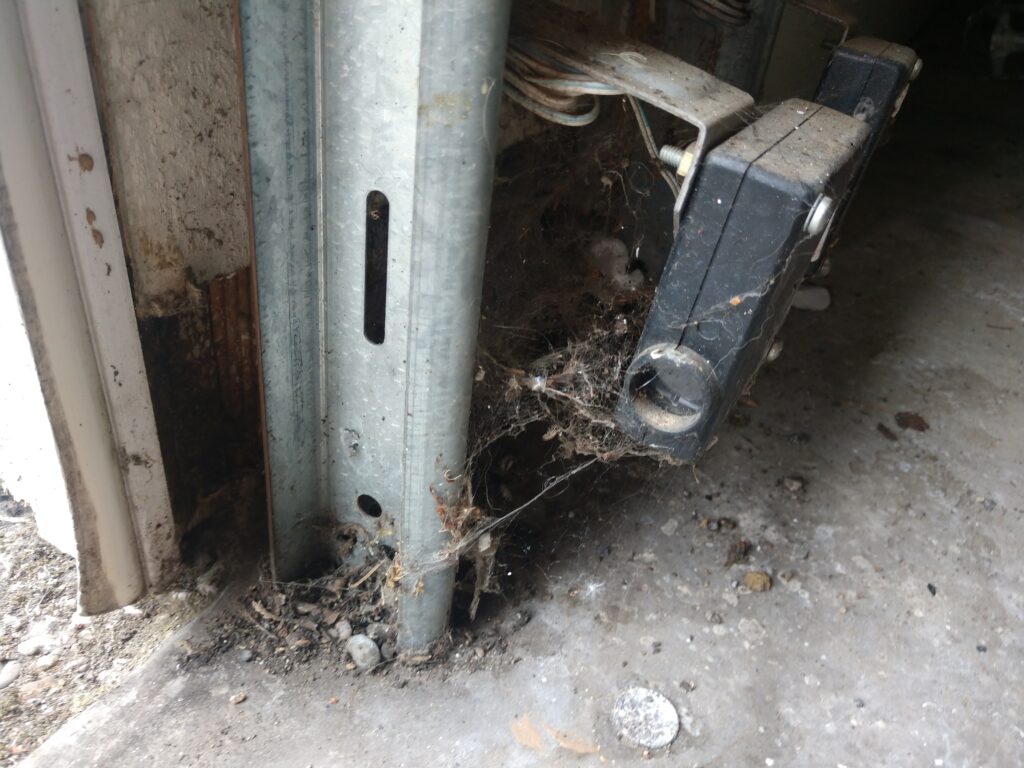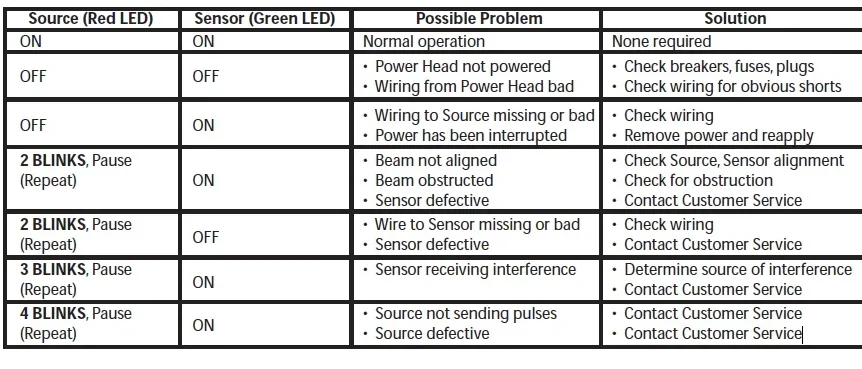Genie is one of the biggest garage door opener manufacturers in the North American residential market. They manufacture their own openers for both professional (Genie Pro line) and homeowner installation, as well as the Overhead Door brand. Like Chamberlain, they have done a horrible job designing their safety sensors despite multiple updates. But they are more straight forward when it comes to lining them up and diagnosing other problems.
If you are in a rush to get your garage door closed, check out my quick guides to overriding and aligning safety sensors.
Here are a few of the different models that Genie has put out over the years.



The latest version, cleverly called the Safe-T-Beam, is backwards compatible with all Genie models (which includes Overhead Door brand) since 1993.
First, a few good things about Genie IR safety sensors:
- Genie safety sensors, unlike Chamberlain, use indicator lights that provide enough information to tell what the problem is (see chart below).
- “Non-polar” which makes it much easier to troubleshoot wiring problems.
- Bright indicator lights.
- Heavy duty bracket that doesn’t get knocked out of alignment easily.
- Sensors stay lined up forever (if they are mounted well and don’t get hit with anything).
And of course there are some down sides:
- The aim of the sensors cannot be fine-tuned other than by bending or twisting the bracket.
- Way too big, especially the latest version which stick out a couple inches further than any other brand.
- Heavy duty bracket is difficult to bend back into shape if it does get bent.
- Modifying the bracket to fit into tight spaces requires a saw or angle grinder.
- Spiders (at least in the Pacific Northwest) find Genie sensor to be very hospitable and like to build a web that covers the sensor’s lens.
- It is easy to break the wire off at the screw down terminal on the back of the sensor (usually when sweeping or moving trash cans around), especially after it gets brittle with age, or when extremely thin wire is used.
- Screw down terminals can get loose over time which often leads to intermittent problems with the sensors.
- The build quality is not great – a good shot with a garbage can break the sensor. They also seem to go bad a little bit more frequently than other brands (this is purely anecdotal based on my experience).
How to Deal with Genie Safety Sensors
Genie has redesigned the look of their IR sensors and mounting brackets a few times but there is little functional difference between the different iterations.
They all have a bright red light on the receiving sensor that should be solid red when there is a proper connection. The sending sensor has bright green light (some very old models have no light on the sending eye) that will always be on as long as the wire hasn’t been damaged or broken.
The red light WILL NEVER TURN GREEN no matter how hard you try. I talk to people all the time who have wasted tons of time trying to make the red light turn green. I promise you, the Genie receiving sensor light will not turn green, ever, for any reason.
Much like their main competitor (Chamberlain/LiftMaster/Craftsman), Genie employs a mounting bracket that can present a challenge to homeowners and ill prepared garage door technicians. It doesn’t provide any ability to adjust or aim so you have to be sure it is nice and straight when you mount it. And if you have to cut the foot off of the bracket to make it fit in a tight spot (for example between the track and concrete stem wall), you will need a good saw or grinder.
The nice thing about Genie sensors is that they give you plenty of information, and when mounted properly, they don’t come out of alignment on their own over time or from being lightly bumped. The bracket is very rigid so it is hard to knock the sensor out of alignment without realizing it.
Genie sensors actually provide quite a bit of information. Just watch flashing pattern from the indicator lights and compare to this chart:
